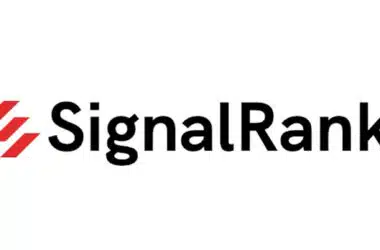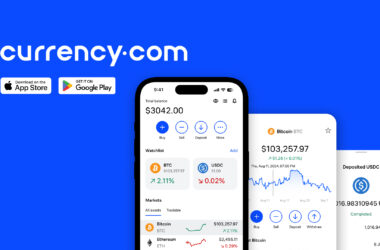Table of Contents
Fintech Lending Industry
As you probably already know, Fintech is a combination of finance and technology. It refers to the innovative usage of technology to help develop financial products and services. We have covered what fintech means and the scope for it, in some of our earlier articles. So make sure that you check them out if you have any confusion about what fintech is.
In the previous articles, we have discussed the applications of fintech only briefly. One such application is in the area of lending. Now we know that banks perform two main functions. They allow deposits and lend money. Fintech has the ability to take over these functions of banks and provide alternative solutions to the people.
Lending is one of the main functions performed by banks. The ability to create credit is in its essence the driving factor behind the progress that we see in the world today. Credit allows people and institutions to borrow money that they do not have at the moment, thus they can carry out expenditures that they would otherwise not be able to.
Mortgage loans for instance allow people to buy properties and then the repayments take many years to be paid off. If mortgage credit did not exist, it would have become very difficult for people to purchase their homes in cash. Similarly, auto loan or car lease is another common type of debit or credit.
Banks also provide personal loans that people can use for any purpose. Now the thing with banks is that they have strict criteria for lending out money. In the aftermath of the 2008 global financial crisis, in particular, banks have been very careful while approving any type of debt.
If the creditworthiness of the applicant is not good enough, banks can simply deny access to debt finance. A decade ago, getting denied by banks would have meant that you only had manipulative loan sharks left. The rise of fintech however has allowed people access to finance even when banks close their doors to them.
Peer to Peer Lending, business to customer and business to business lending platforms have become an industry on their own in the last ten years. According to estimates, the fintech lending industry will be worth over $390 billion by 2023.
What is Fintech Lending?
Fintech lending is an alternative provided by the fintech industry to individuals who have either been denied by banks or those who do not want to turn to banks. Now since the fintech lending industry is an alternative lending industry on its own, this means that it does not use banks as intermediaries. When you take the bank out as the intermediary, you reduce the costs of doing business, you also remove all of the red tape measures that banks have, so funding becomes easier but also riskier at the same time.
How does Fintech Lending Work?
Since fintech lenders do not use banks, their finance comes from donors or lenders. In that sense, fintech lenders basically connect lenders with borrowers. So fintech lending platforms serve as marketplaces for connecting lenders with borrowers.
The lenders register with the platform and then deposit their funds. Each platform has got their own terms and conditions. Some platforms allow lenders to choose their own risk levels. The higher the risk level, the higher the return.
Borrowers can then be matched with the lenders or the platform can keep the lenders at the back end and deal with the borrowers, just like an institution. This is how many fintech lending’ platforms work.
The buyers simply have to register themselves, get their creditworthiness checked and once they submit the required documents online, the lending platform communicates the eligibility and the terms and rates to the borrowers.
If the borrowers find the terms and rates suitable, they can sign the contract and get access to funds in as little as 48 hours. The whole process from starting the application to getting the funds, in most cases takes hardly 2-3 days. With banks, it may take several visits. This is how fintech lending has made access to funds easier for individuals and small businesses.
Banks are not usually willing to lend to startups and small businesses due to a lack of financial history and high risk. This is where the ecosystem of fintech lending companies has really shown its true potential in the last ten years. Although fintech lending can be traced back to 2004 and 2005, the ecosystem developed properly after the global financial crisis of 2008.
Today the United States has got the biggest fintech lending ecosystem, simply because the USA has had the highest number of fintech startups. Europe also has a good fintech lending ecosystem followed by the UK.
Let us now look at some of the leading fintech lending platforms for a better idea of this industry.
- Affirm: Affirm is a fintech company that finances purchases for retail customers. The rates offered by Affirm can range anywhere between 0% to 30%, depending upon the creditworthiness of the customer. Affirm can connect directly with online stores and users can use Affirm to pay for their purchases to the online store. The users later make deferred payments to Affirm, to clear off their balance.
- Afterpay: Afterpay is an Australian startup that is now making inroads into the USA and Europe. Afterpay is similar to Affirm, except for the fact that it does not charge interest. It is an interest-free instalment payment platform for online purchases. Users can make up to four instalments for their purchases. Afterpay was launched with the idea of making access to finance easy and cheap for millennials after the financial crisis.
- Fundbox: Fundbox is a fintech company that offers financing services to small businesses. Fundbox offers invoice factoring services to small businesses, thus allowing them to sell off selected invoices in return for cash.
- Fundera: Fundera is an online lending matchmaker. It connects borrowers with suitable and relevant lenders. Borrowers simply have to provide the details of their financing need and after getting all of the required details, Fundera matches them with suitable lenders.
- Zopa: Introduced back in 2005, this makes Zopa the longest-standing P2P site internationally. Basically, the platform promotes personal lendings for UK lenders. Finances begin at ₤ 1,000, up to a maximum of ₤ 25,000 – and also terms range from 1-5 years. Because the platform was introduced as a pioneer, it has assisted in even more than ₤ 5 billion worth of financings to over 470,000 UK consumers. In return, financiers have actually netted a rather tidy ₤ 280 million in the rate of interest settlements.
What you will certainly notice when you very first head over to the Zopa web site is that it is crystal-clear on what it supplies. This includes whatever from yields to risks, to minimum investments. You will certainly require to deposit at least ₤ 1,000 to get started, although you can invest just ₤ 10 per loan. Your ₤ 1,000 investment would enable you to diversify across 100 different finances. - Funding Circle: Introduced in 2010, Funding Circle is a UK-based P2P website that specializes in business loans. Because the platform’s beginning a plain decade earlier, Funding Circle has assisted in greater than ₤ 6.2 billion in lendings, which it claims, caused the development of 72,000 jobs in 2018 alone. The organizations that utilize Funding Circle are of medium size, with a minimum of 9 years of trading history. It doesn’t accept start-ups, as well as borrowers that have a typical turn over of ₤ 800,000.
Just like in the instance of Zopa, you will certainly be called to invest a minimum of ₤ 1,000 at Funding Circle. This permits you to purchase 100 various fundings at ₤ 10 each, so you’ll be well diversified. As as well as when your regular monthly settlements come in, you will certainly have the alternative of reinvesting them instantly. This permits you to appreciate the fruits of the marvellous compound interest.
There are dozens of similar fintech lenders, who are providing convenient and relatively cheaper financing to small businesses and individuals as compared to conventional banks. The fintech lending industry is growing at a rapid pace and it is expected to grow further because many small businesses have experienced a drop in their creditworthiness due to the pandemic induced recession, thus rendering them not suitable for banks. Such small businesses are more likely to turn to fintech lenders and thus create more demand for funds.
















Recent Comments